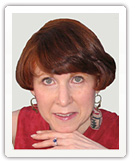e-Tips
Tips For Gen Y Managers With An Older Team
“Older workers reporting to younger managers” is not a totally new phenomenon. But it is a growing and potentially problematic trend, as the large generation of Baby Boomers stays on in the workforce longer and the large generation of Gen Y or Millennials eager for promotion rises along with Gen Xers. They bring new management styles and often anxieties owing to lack of management experience and training.
For some guidance, young managers can look to the stories of CEOs who were faced with upside down reporting relationships early in their careers and happened upon formulas that became pillars of their considerable business success.
Two Success Stories
Bob Pittman, chairman and chief executive of Clear Channel communications was 19 when he was given about a dozen people to manage as the programmer of a radio station in Pittsburgh. He had no idea how to manage people but realized he was functioning as a team leader. The command and control model would have been ineffective: “ When you’re 19 no one’s going to accept you as the big boss.”
He saw his job as the team leader who needed to sell his older team members on his ideas and “to keep selling them, listen really well, let everyone have a voice and to let there be some dissent.” As told to Adam Bryant for his New York Times Corner Office column that was the origin of the style he has used ever since.
Another younger manager/older workers story comes from Amy Errett, chief executive and co-founder of Madison Reed. When she was 23, she was plopped into a huge job of managing hundreds of people in a bond-processing department of a bank. “I had no idea what I was doing,” she said. “There were all these people who had been there a really long time, and I was probably half their age. I was just terrified…Where do I even start? I set up a meeting and nobody came.”
Following her instinct, Errett learned that the essence of successful managing was the relationships and trust she could develop. It was about including them. She reached out to each person and said, “I want you to tell me in the most honest way what you don’t like about your job.” In this way she started to really understand their ideas and implement those. While the first reaction from many people to that request even today is “Can I trust her?” it actually started the trusted relationship.
In anticipation of the younger manager/older staff challenges, over the last five years I have written articles, done videos and webinars, conducted workshops and delivered talks on this topic as a component of professionalism, succession planning and cross-generational conversation. The stories of the CEOS above provide reinforcement and additional learning opportunities.
Observations and Lessons
Here are 7 more learnings we can take away from the two young manager success stories:
- Senior managers were willing to take risks on these young new managers and thought they could do the job.
- “Sink or swim” is a tough initiation for a leader or manager but a great learning experience and can build confidence and resilience.
- Include. Don’t try to boss.
- Build relationships through inclusion.
- You aren’t expected to have all the answers. It’s better not to think you know better or you know everything.
- Be confident enough to show some vulnerability. People will help you.
- Respect breeds mutual respect.
Reminder to the older members of the team who might feel discomfort:
- Keep focused on the common objective and the external or internal client or customer.
- Collaboration will benefit all long-term.
- Your mentoring and coaching can also be your reward.
I hope these are helpful tips for both the younger managers and older staff to work more productively and harmoniously. Send comments to pwhaserot@pdcounsel.com or share on the Cross-Generational Conversation group on LinkedIn.
Phyllis
© Phyllis Weiss Haserot, 2013. All rights reserved.
* The generational chronology for easy reference: Generations are defined by the similar formative influences – social, cultural, political, economic – that existed as the individuals of particular birth cohorts were growing up. Given that premise, the age breakdowns for each of the four generations currently in the workplace are approximately:
Traditionalists: born 1925-1942
Baby Boomers born 1943-1962
Generation X born 1963-1978
Generation Y/Millennials born 1979-1998
Struggling with how to achieve vital knowledge transfer among the generations? Ask about our workshop “Avoiding the Cliff: the Human Side of Succession Planning and Knowledge Transfer”
For coaching, training and special programs on inter-generational challenges for and among 4 generations in the workplace, attracting and retaining clients and employees of different generations, and maximizing the potential of young professionals and work teams, call or email Phyllis for an exploratory talk or complimentary coaching session at 212-593-1549 or pwhaserot@pdcounsel.com. Ask about our signature program *Frontrunner 5.”
Phyllis is available to speak at your organization or at firm retreats on inter-generational relations and organizational effectiveness topics. Call or e-mail for a list of topics or to custom-tailor your own.

